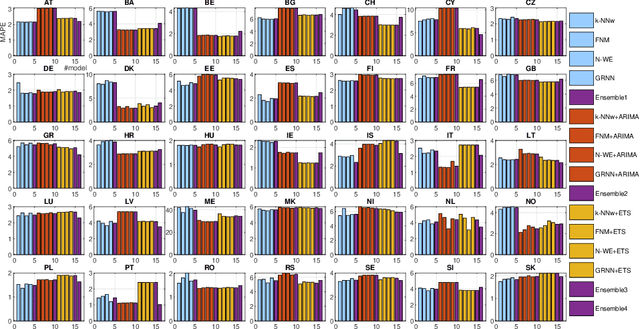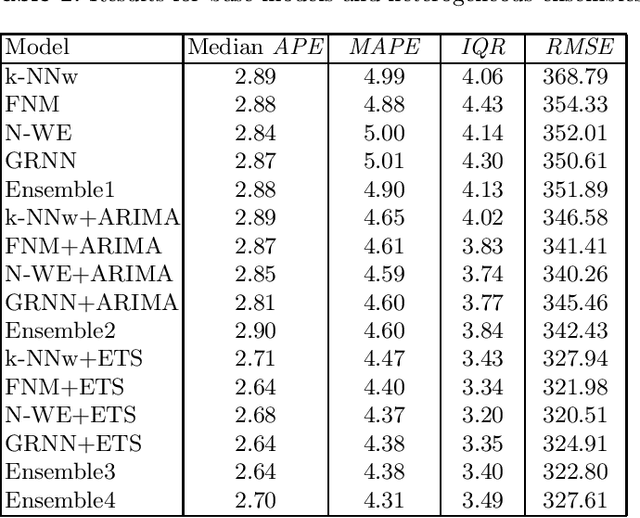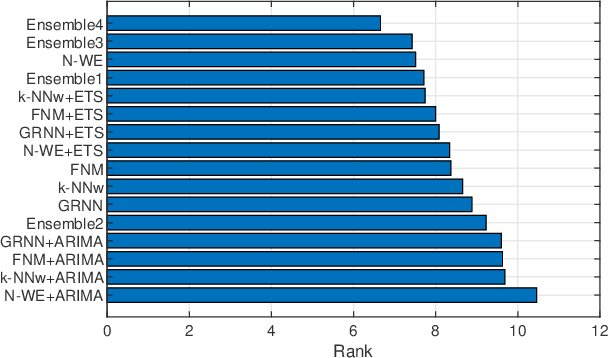Ensemble Forecasting of Monthly Electricity Demand using Pattern Similarity-based Methods
Paper and Code
Mar 29, 2020



This work presents ensemble forecasting of monthly electricity demand using pattern similarity-based forecasting methods (PSFMs). PSFMs applied in this study include $k$-nearest neighbor model, fuzzy neighborhood model, kernel regression model, and general regression neural network. An integral part of PSFMs is a time series representation using patterns of time series sequences. Pattern representation ensures the input and output data unification through filtering a trend and equalizing variance. Two types of ensembles are created: heterogeneous and homogeneous. The former consists of different type base models, while the latter consists of a single-type base model. Five strategies are used for controlling a diversity of members in a homogeneous approach. The diversity is generated using different subsets of training data, different subsets of features, randomly disrupted input and output variables, and randomly disrupted model parameters. An empirical illustration applies the ensemble models as well as individual PSFMs for comparison to the monthly electricity demand forecasting for 35 European countries.
 Add to Chrome
Add to Chrome Add to Firefox
Add to Firefox Add to Edge
Add to Edge